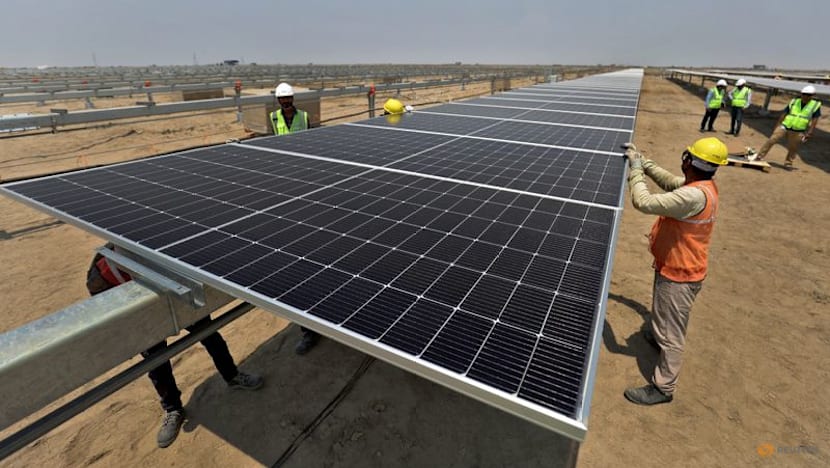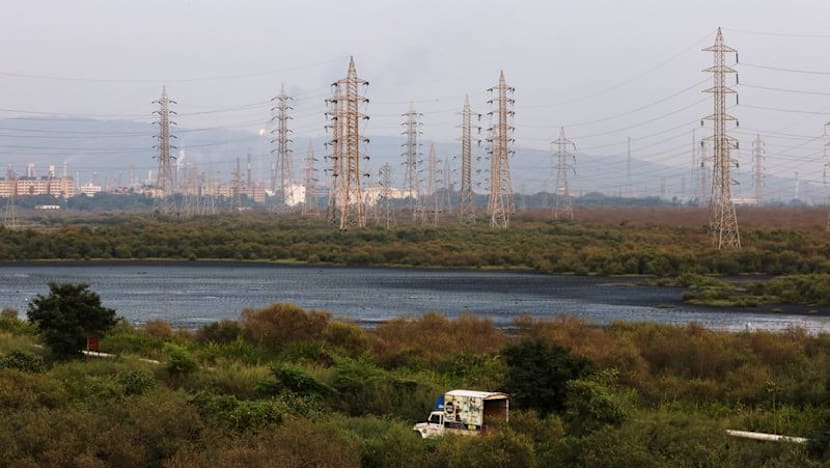Commentary: Asia cannot wait for others to step up as climate leaders
For Asian economies, resilience is necessary to ensure hard-won development gains are not eroded by climate shocks, says COP30 special envoy and environment think tank CEO Arunabha Ghosh.


This audio is generated by an AI tool.
NEW DELHI: Torrential rains in Darjeeling, India and Nepal, where landslides swept away lives and bridges; Hanoi's streets once more submerged after the latest of successive typhoons; deadly floods in Thailand across 19 provinces; residents of Japanese islands battered by Typhoon Halong forced into evacuation centres – and that was just October.
Indeed, 2025 has rung loud sirens on climate extremes that seem to still go unheard.
A decade since the Paris Agreement was signed, the United States has chosen to withdraw, cracks are appearing in the European Union’s climate consensus, and the United Kingdom’s climate legislation is under attack. Self-appointed climate leaders have often failed to meet domestic climate targets and repeatedly postponed their international obligations to provide climate financing.
One can hope for a change of heart, but hope is not a strategy. Instead, Asia must assume control of its climate (and economic) destiny.
The Asia-Pacific region has borne over half of all global climate change-induced disaster-related deaths and nearly US$2.7 trillion in economic damages since 1970, according to a United Nations ESCAP report. The Climate Risk Index 2025 ranks India and China among the top 10 countries for climate-induced financial losses.
Unfortunately, Asian and its emerging economies do not have the luxury of dealing with one crisis at a time. They must create jobs, upgrade standards of living and maintain economic dynamism, all the while looking for new sources of investment, trade partners and security guarantees.
In short, Asia needs climate resilience. The ability to prepare for, respond to and recover from the impacts of climate change is not a theoretical exercise. Climate resilience is the critical buffer between hard-won development gains and their erosion by climate shocks.
RESPONDING TO LOCALISED RISK
Our work at the Council on Energy, Environment and Water (CEEW) in India has taught us four core principles to building this resilience.
First, resilience must be hyperlocal to protect lives and livelihoods, since vulnerability is localised.
The systemic shocks witnessed across Asia recently are not isolated incidents. They represent a pattern of escalating risks. In India, three out of every four districts are now extreme climate event hotspots with multiple, overlapping hazards, affecting 80 per cent of the population. But interventions cannot be one-size-fits-all, when the risk differs across geography and population.
In Thane, a coastal city of 2.5 million people, CEEW developed hyperlocal heat action plans: Local temperature and humidity data were layered with health and socioeconomic metrics to target interventions by neighbourhood. Such heat action plans have been developed for over 50 cities and now cover 60 million people.
Similarly, hyperlocal flood mitigation strategies and air quality monitoring systems are helping such cities respond more equitably and with more precision despite their limited resources. Resilience for 1.5 billion people can only be built granularly, one locality at a time.
CRUCIAL ROLE OF POWER GRIDS
Second, resilience must be wired into our evolving power grids. Emerging markets are projected to drive 88 per cent of global electricity demand growth by 2040.
India has been steadily building up its clean energy capacity over the past 15 years, and has now become the third-largest producer of electricity from wind and solar in 2025. It is aiming for 500 GW non-fossil capacity by 2030 with a rapidly expanding grid.
This momentum is across the region. Sri Lanka is targeting 70 per cent renewable energy generation by 2030. It is investing in new transmission lines to harness more offshore wind and solar power. China also added over 212 GW of solar and 51 GW of wind capacity just in the first half of 2025 – pushing its solar capacity past 1.1 TW and further cementing its global leadership in clean energy expansion.

But size alone does not guarantee resilience, as the summer grid failures in Europe have shown. Maintaining and updating power grids is just as important as expanding them.
Our research also found that, contrary to entrenched belief, injecting more renewable energy into India’s power grid would increase the availability of reserves, resulting in superior reliability. This is critical as peak power demand in hot, humid Asia is outpacing average electricity growth. In fact, scaling India’s non-fossil capacity to 600 GW would yield the most reliable grid at the lowest cost.
CLEAN ENERGY HINGES ON SUPPLY CHAINS
Third, resilience must define our supply chains. The clean energy transition hinges on supply chains that are dangerously concentrated, a vulnerability which has now been exposed by geopolitical shocks and tariffs.
A critical question now is how Asian economies should distribute these supply chains, whether for products, minerals or tech. More countries are importing cleantech components, but from a small number of source countries. About 15 countries control the production and reserves of rare earths and critical minerals like zirconium, platinum and nickel.
This asymmetry creates strategic choke points. Asia’s cleantech resilience depends on countries working together to ensure supply chain diversification. Ideally, Asian economies would move beyond competition to a nuanced analysis of comparative advantage, component by component: from aluminium foil to silver paste, from electrolytes to junction boxes.
China’s minerals manufacturing and processing prowess and India’s strengths in software and circular economy models can be complementary.
Together, they could co-develop the architecture of resilience: through joint mineral consortia for exploration, a global shared minerals exchange platform, and blockchain-based traceability to track clean energy supply chains. Such cooperation could turn resource competition into shared energy security in the region.
MORE THAN THE FLOW OF ELECTRONS
Fourth, the energy transition is inextricably linked to land, water, and food security.
A recent UN report warned that excessive heat is already harming worker health and productivity globally. The scramble for tech dominance and the exponential power demands of AI add further complexity.
But the most immediate tension lies closer to the ground: The same finite land and water that feed people are now also needed for massive solar parks and wind farms. If clean energy infrastructure is built without foresight, it could displace farmers, strain water resources, and create new social inequities, where the benefits of investment are felt nationally but the costs are borne locally.
Despite these constraints, our modelling shows India can still achieve its colossal clean energy ambitions – with potential for over 7,000 GW of renewable power and 56 million tonnes of green hydrogen. The key is an integrated approach that steers projects toward areas where they avoid fertile farmland, use water sustainably, and ensure local communities see tangible benefits, from jobs to shared revenues.
This same logic must guide regional policy. Cross-border cooperation on managing shared river basins, developing climate-resilient agriculture, and building interconnected green grids can turn potential conflicts into areas of collaborative resilience. When countries are bound by shared infrastructure and mutual interest in climate stability, the foundations for regional peace and prosperity grow stronger.
India and Asia can offer a new, compelling model of climate leadership: one that is pragmatic, solution-oriented, and injects new forms of cooperation for collective security in the challenging times ahead.
Dr Arunabha Ghosh is CEO of the Council on Energy, Environment and Water (CEEW) and Special Envoy for COP30 representing South Asia and wrote this as part of the Asian Peace Programme (APP), National University of Singapore, Singapore. Views are personal.


















